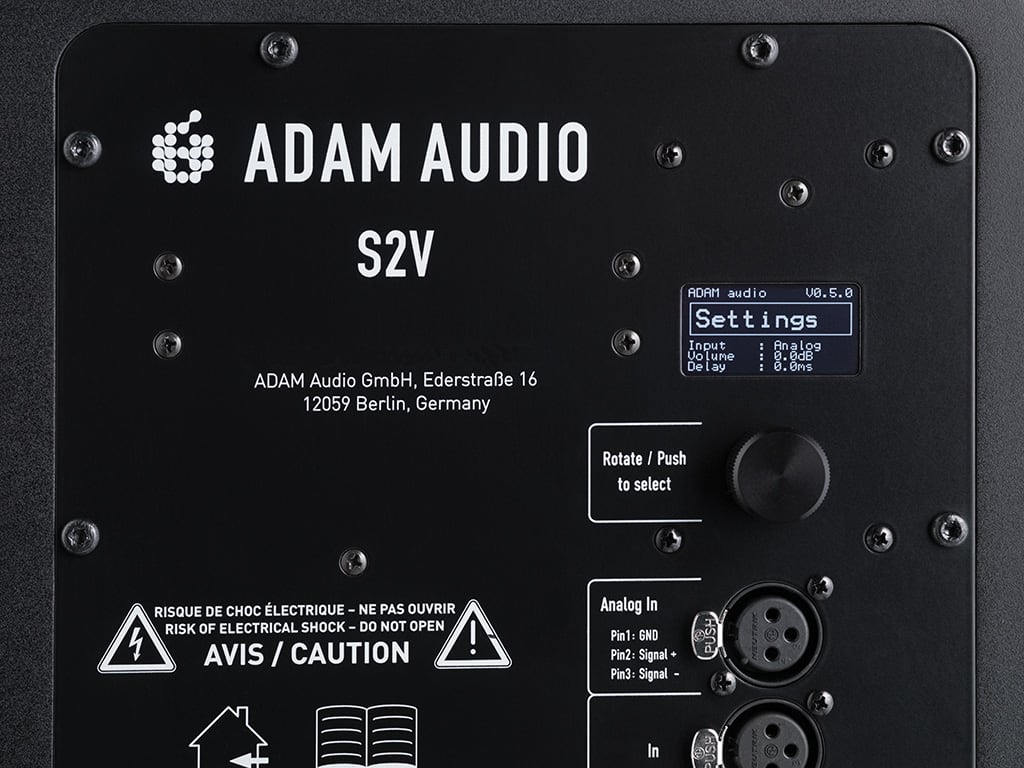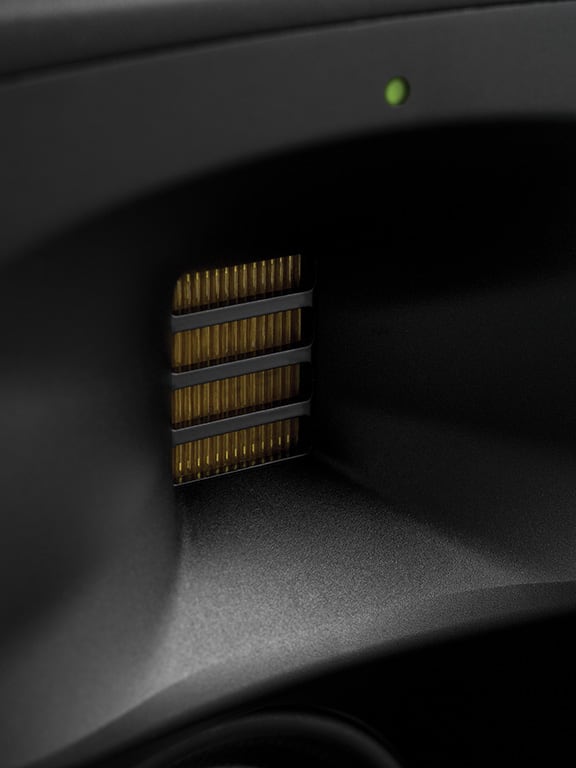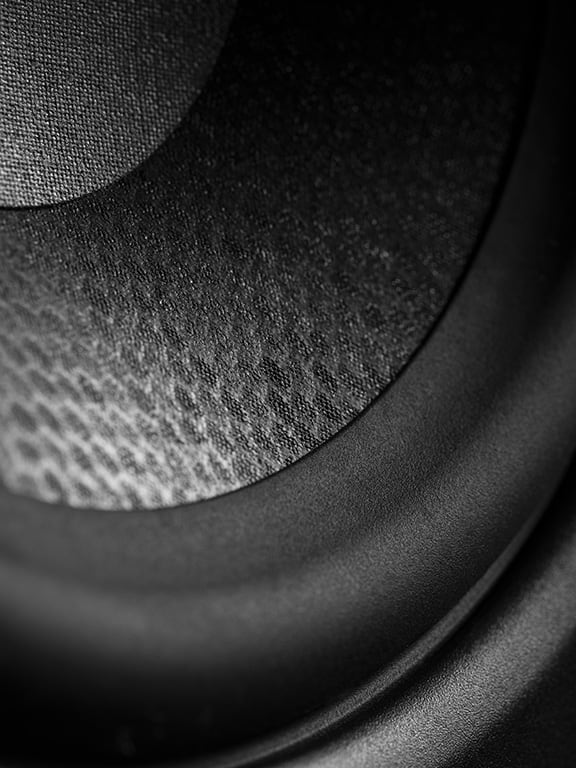
Review: ADAM S3H Mid Field Monitors
ADAM isn’t just about ribbons, it’s reinvented all its drivers in the new S series.
I can’t say I’ve auditioned any ADAM monitors before. At least never in any official review capacity. However, I’ve experienced the ADAM designs a handful of times in various spaces — primarily in rooms where electronica, sorry, EDM, is the order of business. Most often this would be the now discontinued A7 model from 2006 — a monitor that broke cost versus performance ratios and wedged ADAM’s technology into the prosumer and budget markets.
The A7 became a minor classic, predominantly due to its detailed and un-fatiguing high frequency performance. This is possibly why the EDM crew latched onto the ADAM A7 and the following A7X monitors like ducks to water. The S3A also made countless friends.
HIGH END ACCORDIONS
Responsible for the detailed high-end reproduction is ADAM’s tweeter designs. Often referred to as ‘ribbon’ tweeters, the configuration is more correctly known as an air motion transformer. The concept was invented by Dr Oskar Heil, and patented by Oskar in 1973, so this isn’t new technology. Air motion transformers, or AMTs, use a material such as polyethylene, polyester or mylar, folded into an accordion-like profile. This is bonded with aluminium strips and held within a strong magnetic field. Once the audio signal is applied to the aluminium the accordion structure expands and contracts, expelling air forward from between the folded layers. The advantages are twofold: the surface area of the accordion structure is around the same area as a six to eight-inch driver, so a large amount of air can be moved. Plus, the speed at which the structure moves is extremely fast, around five times that of a conventional cone driver. Consequently reproduction of very high frequencies is possible using this type of driver. The design also reduces distortion, breakup of the signal and any resulting dynamic limiting. The outcome is a clearer signal with a marked increase in transient response.
ADAM has taken the concept and applied its own research and variations, coming up with various iterations using the ‘Accelerating Ribbon Technology’ moniker. This has led to the X-ART series of tweeters (the ‘X’ denoting an ‘extended’ application of ART), and has been the company’s mainstay for high frequency drivers since inception.
Earlier this year ADAM announced the ‘S’ series monitors, comprising five near- to mid-field designs – four three-way models and a solitary two-way design. For appraisal I’ve been bestowed the S3H which incorporates two seven-inch woofers, a four-inch dome/cone hybrid mid-range driver, and ADAM’s latest S-ART high-frequency driver. ADAM says this newer driver designation is courtesy of greater precision manufacturing and more rigorous quality control and testing. However, the S-ART tweeter isn’t the only advance from previous ADAM designs, as the company has cherry-picked and integrated a raft of technologies into the S series. Let’s see what’s involved with the S3H.
TWO IS DEEPER THAN ONE
The S3H holds the ‘H’ title as it’s designed to sit horizontally — other models in the range sporting a single woofer take the ‘V’ designation and sit vertically. Based on the Joseph D’Appolito design, the S3H uses two low frequency seven-inch drivers with the midrange and tweeter set between the two. While not strictly ‘D’Appolito’ (Joseph D’Appolito’s design designates two mid-range drivers with a tweeter between in a vertical configuration), the horizontal woofer system has been appropriated for many studio monitor designs throughout the years to exemplary effect. With dual bass drivers you gain a lot of surface area using smaller, more efficient and precise drivers. For example, two seven-inch drivers provide 76.8 square inches of surface area, whereas you’d need a single 10-inch driver to surpass that at 78.5 square inches. An eight-inch driver will glean a mere 50 square inches and won’t sound as ‘tight’ as a six or seven-inch driver. The amount of bass frequencies produced is relative to the surface area, combined with the excursion the driver can provide. With two smaller drivers you also gain more precise reproduction and imaging than with a single, larger driver. In essence, the two act as a single, precision radiator.
NEED TO KNOW


Cone composition of the seven-inchers is proprietary, and designed for extended excursion and low weight, constructed using a honeycomb ‘HexaCone’ material. The results are impressive, with the S3H delivering clear, punchy and alarmingly precise low-end.
The 100mm mid-range unit is also proprietary. Here, ADAM has come up with a part cone/part dome configuration, offering the linear frequency response of a dome driver with the extended excursion of a cone driver. The single piece cone/dome is manufactured with a laminated carbon-composite material that reportedly eliminates driver wobble and will reproduce frequencies down to 200Hz.
We’ve investigated the high frequency driver composition, but the other crucial part is the waveguide it’s mounting within. This is milled from a good ol’ block of aluminium (nothing plastic around here sir) and is designed to achieve a broad horizontal axis yet tightly-focused vertical plane. Placed directly above the mid-driver (which also resides in an aluminium waveguide), I can attest these two work together achieving a gorgeously solid stereo image. Crossover points come in at 250Hz and 3kHz — quite unlike ADAM’s S3X-H which shared frequencies between each of its 7.5-inch woofers. Overall frequency reproduction from the S3H starts at 32Hz and winds out to 50kHz — such are the highs possible from S-ART tweeters. Moving up the range to the S5V and S5H will garner lows of 26Hz and 24Hz respectively. Impressive figures, yet I’ve found no data on frequency rolloff.
WRAPPING UP INSIDE
Cabinet-wise, the S3H uses the tried and true bass-reflex design, with two ports emanating from the front baffle beneath the two low-end drivers — soffit mounting is therefore an option. As per established science the corners are radiused to avoid edge-diffraction anomalies. Construction is medium or high density fibreboard, judging by the 26.6kg weight I’d assume the latter, with the cabinet and front baffle being 32mm in thickness. I had a peek inside the S3H cabinet and can tell you these are a work of art. All the internal surfaces are finished and sealed, with the rear of the porting curved to avoid internal port turbulence. All cables are covered with transit blanket to avoid rattles. Then there’s pyramid style audio foam throughout for damping. Just as impressive is how the two low-end driver compartments are sealed from each other with fibreboard and damping — in essence, they’re two completely seperate cabinets. ADAM has reassuringly gone to town and back with the engineering.
While we’re here, let’s look at amplification. There’s an assortment of amplification systems throughout the S series. The low and midrange drivers are powered by Class D amps which offer low heat output and are lightweight. The low-end drivers are individually amplified with efficient 500W amps (yes, that’s one 500W amp per driver), with the midrange driver using a 300W amp. When it comes to the S-ART tweeter ADAM has used a 50W Class AB design for its lower distortion and linear response up to 300kHz. So add it up; that’s 1350W per monitor spewing a staggering 126dB from a pair at one metre.
DSP DOES IT ALL
Like many of the new breed of studio monitors, ADAM’s S-series utilises DSP to look after crossover duties, equalisation, and connecting digital AES/EBU signals. Digital connection has been an optional expense with previous ADAM designs, and an expensive option at that. Digital connection is a matter of connecting AES/EBU to the first monitor, daisy-chaining to the next monitor and setting each monitor to reproduce left or right stereo signals. How’s the selection happen? Well, on the rear of an S-series monitor is a small OLED display with a variable potentiometer combined with a pushbutton. Apart from digital setup and editing of delay times, this also provides access to input level adjustments and various EQ settings. EQ-wise there are a couple of presets: ‘Pure’ for straight-up flat response, and ADAM’s own ‘UDR’ curve (Uniform Natural Response). After that there’s two parametric shelving filters (one for low-end and the other for highs) as well as a further six fully-parametric EQs. Any alterations you decide upon can be stored into any of three user memories. You can even select an additional preset EQ curve designed to emulate the sold-by-the-truckload ADAM S3A. Personally I stuck to the ‘Pure’ flat response in my room, but if you or your room are so inclined there’s oodles of scope for customisation.
Just as impressive are the two low-end driver compartments — in essence, they’re two completely separate cabinet. ADAM has reassuringly gone to town and back with the engineering
BACK TO FRONT
You’ll recall my mentioning of soffit mounting the S3H monitors, along with the fact all adjustment to the monitor’s DSP is accessed via the rear of the unit. There’s logistic issues accessing these controls if the monitors find themselves soffit mounted, or even issues accessing the rear due to the sheer weight of the S3H. Legacy ADAM designs have often housed adjustment controls on the monitor’s front, which is obviously great for making adjustments from somewhere close to your listening position. The S-series intends to do away with this dilemma by way of software. The rear of all S-series monitors houses a USB-B port which is slated to enable both software upgrades to the DSP, and the ability to adjust EQ and recall presets via your computer. Quite the boon I say, yet the software is so far unavailable. Requests to the ADAM mothership via the Australian distributor returned the hopeful adage of “soon”.
Equally as vaporous is the ‘Network’ slot on the rear of the units. It’s marked as being ‘optional’ with ‘in’ and ‘out’ legends. The manual states the Network slot “…will hold two RJ45 connectors for future expansion…”. Two things spring to mind: will the network card cost as much as previous digital cards, and will it possess AES67 smarts? With AES67 capability you could route digital 96k audio straight from your computer — all without the need for an interface. Two $10 ethernet cables will get the job done, unless of course you find some audiophile-grade ethernet cables. Trust me. They’re out there. Alongside the magic crystals and beans.
NOT PULLING PUNCHES
So what’s to dislike about the ADAM S3H? Nothing, I’m convinced. ADAM hasn’t pulled any punches with the S-series (save the control software and the networking card). The stereo imaging is simply immaculate, the three-way model seamlessly transitions between frequencies, and low-end is tight, predictable, and detailed. What’s more, I’d gladly sit in front of these for the day — as opposed to anything with a metal dome tweeter. Transients are impeccably reproduced without bashing your ears within an inch of their usable timeframe. I’m no fan of metal tweeters. Sure they have their place, like finessing infinitesimal effect details (at a huge distance away from me), but the S-ART high-end drivers are by far a best-of-both-worlds option; un-fatiguing, yet detailed. In all honesty, I did the ‘listen to all my favourites’ thing with the S3H monitors, literally hearing nuances I’d not experienced before. And hey, they’ll impress the clients no end with their authoritative bottom end and sheer output.
However, the S3H isn’t for the feint of pocket. At around $10k Aussie they’re a huge step for most. Yet, in an age where audio production requires translation to umpteen different streaming formats, iTunes, Youtube, gaming consoles, virtual and augmented reality platforms, vinyl and good ol’ garden variety compact disc, you could advocate this figure to be a prudent expenditure. Laptop, software, monitors. Go!

















You said “Laptop,software, Monitors” so this does not require a DAC?
Also how do these compare to the previous s3x-h series?